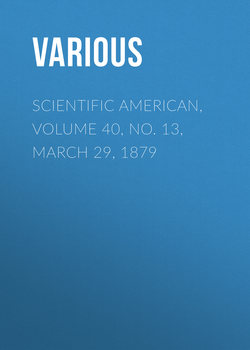Читать книгу Scientific American, Volume 40, No. 13, March 29, 1879 - Various - Страница 12
A NOVEL ENGINE REGULATOR
ОглавлениеThe accompanying engraving represents two different styles of regulator, invented by Mr. Stenberg, in which the effect of centrifugal force is utilized. In a vessel, A, of parabolic shape is placed a disk, C, which floats on glycerine contained by the vessel, and is attached to the walls of the vessel by an annular membrane, so that it may rise and fall in a vertical direction as the glycerine is carried with more or less force toward the edge of the vessel by centrifugal action. The inner surface of the vessel, A, is provided with radial grooves, by which the rotary motion of the vessel is communicated to the glycerine. To the center of the disk, C, is attached a vertical rod, which extends downward through the hollow shaft and is connected with governor valve. An increase of speed throws the glycerine toward the periphery of the valve, and, raising the disk, C, closes the steam valve; a diminution of speed permits the glycerine to fall back, when the disk descends and the valve opens.
STENBERG REGULATOR.
The disk, C, has a small aperture for the admission and escape of air, and the apparatus is adjusted by pouring lead into the groove in the disk.
The regulator shown in Fig. 2 operates upon the same principle, but it is adjusted by means of a spring.
This apparatus is manufactured by Blancke Bros., Magdeburg.—Musée de l'Industrie.
A Strange People
Botel Tobago is an island in the South Seas which has lately been visited by a party of United States naval officers. They were surveying a rock east of the South Cape of Formosa, and called at this island. They found a curious race of Malay stock. These aborigines did not know what money was good for. Nor had they ever used tobacco or rum. They gave the officers goats and pigs for tin pots and brass buttons, and hung around the vessel all day in their canoes waiting for a chance to dive for something which might be thrown overboard. They wore clouts only, ate taro and yams, and had axes, spears, and knives made of common iron. Their canoes were made without nails, and were ornamented with geometrical lines. They wore the beards of goats and small shells as ornaments.
Such is the account of these strange people given by Dr. Siegfried, in a letter read at the last meeting of the Philadelphia Academy of Natural Sciences.
